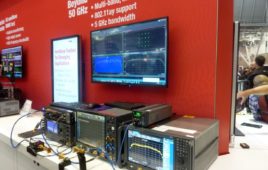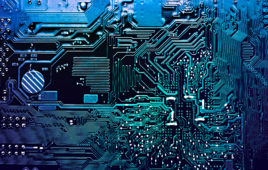It is no simple task to know just how an object as complex as an aircraft engine, a wind turbine, or even a mobile network is performing at any given moment. It’s harder still to determine how it will perform in the future.
But by building an exact simulation of such an object, and feeding it data so that it behaves like the real thing, it’s possible to learn how its behaviour may change in various different circumstances, and even predict what it might do next.
The concept of the Digital Twin – a digital replica of physical assets, processes and systems that mimics changes as they occur in an actual physical systems – has been around since 2002. Although, the increased adoption of IoT and cloud technologies has now made it cost-effective enough to gain real momentum in telecoms and enterprise. Indeed, Gartner named it as one of its Top 10 Strategic Technology Trends for 2017, and IDC predicts 60 percent of manufacturers will use digital twins as a means of monitoring product/asset performance within the next two years.
General Electrics, for example, built digital twins of critical jet engine components that can predict their remaining life and optimum maintenance intervals. By providing up-to-date, customised information, these digital twins allow GE’s to manage these engines to deliver maximum profit and performance, while ensuring passenger safety.
The concept of the digital twin is not limited to discrete, self-contained objects such as jet engine components, however. Telecoms networks, which are infinitely more complex, can also be better managed using a digital twin.
Digital Twins for Telecoms
As operators continue to add layers of technology, utilise additional spectrum bands, offer more services, and connect more devices to their networks, the burden on their operations teams will only increase. This is a situation that will only be exacerbated by the demands of IoT and soon, 5G.
Consider a network with 10,000 base sites that today serve 10 million subscribers. By 2025, widespread IoT adoption means that this network will need at least another 100,000 sites to support 100 million connected devices and advanced 5G use cases will require 10x lower delays and 100x faster data speeds. Managing a network of this unprecedented complexity would benefit greatly from a digital twin representation of the real-world conditions that would affect the performance of those base sites, such as the physical environment, usage at various locations, mapping, and the location of street furniture.
Digital twins could also be used for the effective management of mobile cell towers, particularly those in remote locations which can be difficult to maintain. Comprising several pieces of equipment, including antennae, power generators, and surveillance cameras, these towers require continuous monitoring. To enable this, remote sensors can collect a range of data, on aspects such as proximity, temperature, motion and position, which can then be analysed using AI/ML algorithms before being fed into a digital twin of the tower itself.
By viewing the digital twin as a replica of the tower, operations and field service management teams would then be able to address any issues that arise. What’s more, as tower site technology tends to be multi-vendor, the insights provided by the digital twin could be shared as a service to the various equipment providers, thereby monetising the data.
Finally, it’s worth considering that operators currently use a variety of different tools for network modelling, planning, simulation, deployment, orchestration and operational support activities. Most of these are used in isolation, and lack the capability to provide an historic, dynamic end-to-end view of the network, its services, and all their interdependencies. A digital twin, however, can bring together all these tools’ capabilities to deliver accurate network inventory and user device data from live operations. By analysing this wealth of data, a digital twin’s AI/ML capabilities can plot patterns, identify anomalies, predict faults, and take corrective actions dynamically.
Sharing technologies and insights
Rather than being a technology in and of itself, a digital twin is actually the confluence of several different technologies designed to deliver specific business outcomes. It brings together the assets of multiple technology vendors, equipment providers and systems integrators. The concept can create value for the operator. It is an approach that combines the intelligence, insights and powers of visualisation and automation to succeed in an increasingly competitive and digital future.
Operators and network equipment providers (NEPs) are in a strong position to use the digital twin model to manage their towers, cell sites and network architecture. They already have and use many of the necessary components, such as geolocation tools, predictive analytics, and the ability to map cityscapes in 3D. But no one telco or NEP can do it alone. Collaboration, and the sharing of technologies and insights between organisations is necessary to realise the potential of digital twins.
Together, ecosystems are stronger
A strong partner ecosystem is therefore a necessity to make this a reality for the telecoms industry.
With this in place, operators will then be able to fully enjoy the insight and intelligence that a digital twin can provide. That allows proactive and predictive monitoring and maintenance of their assets, wherever they’re located, no matter how complex their network becomes – now and in the future.


